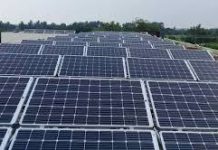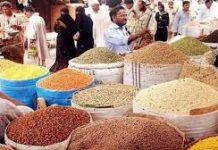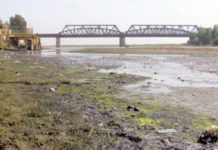By Muhammad Luqman
The light rains over the northern half of Pakistan on Friday, capped the weeks-long dryspell in the South Asian country, besides relieving the people of the smoggy weather.
The central Pakistan province of Punjab has been in the grip of haze and the smog over the last couple of weeks, mainly due to the paddy crop stubble burning by the farmers in Pakistan and neighbouring India, and emissions from brick kilns and the automobiles.
“ The westerly wave induced rains have temporarily cleared the atmosphere of the particulate matter and other pollutants; But smog may return again and again till the end of November,” says Muhammad Riaz, Chief Meteorologist.
Over the last couple of years, smog has emerged as the fifth season in central Pakistan after summer, winter, spring and autumn. On November 2, 2016, the people of Lahore, the eastern city of Pakistan witnessed the worst smoggy conditions when entire city was engulfed by the toxic air, mainly containing the smoke of the paddy crop residue burnt by the farmers in neighbouring India.
Since then, Pakistan especially its central province of Punjab has taken a number of measures including ban on the burning of paddy crop stubble in the fields. It has also slapped a ban on the working of the brick kilns from November 3.
However, the brick kilns that have adopted the Nepalese environment friendly technology have been allowed to continue working..
According to experts, the emission reduction in zigzag kilns is around 60% of black carbon and 40% of particulate matter, which turns the plume of black smoke into a less dense white smoke. Moreover, the zigzag kiln is energy-efficient and reduces the use of coal by around 20%, and baked bricks are 90% ‘A’ class bricks compared to only 60% baked in the conventional ones.
They believe that the closure of smoke emitting brick kilns would help bring down the levels of toxicity in the air, responsible for respiratory diseases.
According to the World Health Organization, an estimated 60,000 Pakistanis died from exposure to higher levels of fine particulate matter (PM 2.5) in 2015 and is still believed to be major reason for thousands of death in the year 2016 and 2017.
And itchy eyes and sore throat are not the only symptoms that are caused by it. There is clear evidence that polluted air causes depression, Alzheimer’s, even poor academic performance.
The decision to close kilns was taken by the Punjab government in consultation with the Smog Commission (constituted last year in Dec 2017 by the Lahore High Court) tasked to identify the root causes, formulate a policy and prescribe a plan to protect the health of the people.
A global list of the 50 worst air pollutant emission hotspots in the world by Greenpeace which analysed the satellite data generated by European Space Agency’s new satellite has recently ranked Lahore and its surrounding area 30th.
“Sheikhupura, the local hotspot, seems to be associated with the industrial area that has chemical and building materials factories. Similarly, the Sunder hotspot seems to be linked with the Sunder industrial estate,” the report said.
However, the transport sector emissions were more spread across Lahore and likely to be the “largest contributor” overall.
Latest NASA/Suparco satellite picture showing clearly the heightened and uncontrolled incidence of crop burning in Indian Punjab which carries on unabated. The Pakistan crop burning is only 10-15% and significantly down from 2017 due to onground measures
According to experts, battling the smog has to be a continuous endeavor and not an exercise that takes place at the onset of each winter.















